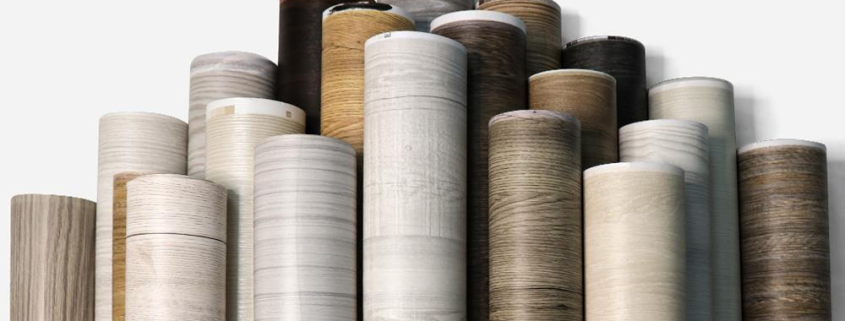How to choose PVC wood grain film?
PVC wood grain film is mainly used in the furniture, cabinet, and decorative board industries. It can be surface veneered or vacuum molded, and the processing is very fast, with good shaping degree and a bright and bright surface. There is no need to spray Western paint on the surface anymore. It has excellent water resistance, excellent corrosion resistance, and is easy to clean. It is a new type of environmentally friendly decorative material.
PVC wood grain film is less prone to whitening, has less shrinkage, has fewer crystal impurities compared to other products, and has good flatness, clear color, good waterproof and moisture-proof performance, good flame retardant performance, good weather resistance, strong stamping resistance, wear resistance, good plastic flat adhesion effect, and is not easy to fade when exposed to indoor and outdoor sunlight. It also has the characteristics of vacuum suction molding that does not eliminate lines and has no white edges.
PVC wood grain film is a new type of decorative material made from high molecular polymer as raw material, with various additives added, and processed through rolling, lamination, and wood grain printing. It can be compounded with substrates such as wood, plastic board, aluminum board, iron board, etc. It is commonly used as decorative materials and is widely used in the production of veneers for office furniture, cabinet doors, wardrobes, wooden doors, woodwork products, speakers, and other decorative materials.
There are many types of PVC wood grain films, such as walnut, cherry, oak, beech, maple, teak, pine, sandalwood, pear, etc., and each wood grain has many colors to choose from.
Its application prospects are also very broad: due to the relatively free selection of the product, there is no need to spray paint the surface, which to some extent saves processing costs. Well shaped, with a bright and beautiful surface, rich colors, pure and vibrant color, and realistic wood grain. It has strong water resistance, corrosion resistance, and scratch resistance. Long term use can also ensure no deterioration. Cleaning is relatively convenient, suitable for all households, and has become the mainstream panel of European cabinets, gradually gaining popularity among domestic users. It is also a new type of environmentally friendly decorative material.
Choosing the right PVC wood grain film involves considering several factors to ensure that it meets your specific needs and requirements. Here are some steps and factors to consider when selecting PVC wood grain film:
1.Application and Purpose:
Determine the purpose of using the PVC wood grain film. Is it for furniture, cabinetry, flooring, doors, or another application? Different applications may require specific film characteristics.
2.Substrate Material:
Consider the type of substrate material (e.g., MDF, particleboard, plastic, metal) on which the film will be applied. Compatibility with the substrate is crucial for adhesion and durability.
Design and Aesthetic Preferences:
Decide on the desired wood grain pattern, color, texture, and finish. PVC wood grain films come in a wide range of designs, including various wood species and finishes like matte, glossy, or textured.
3.Quality and Durability:
Assess the quality and durability requirements for your specific application. Some applications, such as high-traffic flooring or outdoor use, may require more robust and wear-resistant films.
Environmental Considerations:
Take into account any environmental or safety considerations. Ensure that the chosen PVC film complies with relevant regulations and standards.
4.Adhesive Type:
PVC wood grain films often come with different adhesive types, such as hot melt adhesive or pressure-sensitive adhesive (PSA). Choose the adhesive type that suits your application and installation process.
5.Thickness:
Determine the thickness of the PVC film. Thicker films may provide greater durability and resistance to wear and tear.
6.Flexibility and Formability:
Consider the flexibility and formability of the film. Some applications may require a film that can conform to curved or irregular surfaces without cracking or tearing.
7.UV Stability:
If the film will be exposed to sunlight or outdoor conditions, check its UV stability and resistance to fading.
8.Fire Resistance:
If fire resistance is important for your application, ensure that the PVC film meets the necessary fire safety standards.
9.Ease of Installation:
Evaluate the ease of installation and whether it requires specialized equipment or expertise. Some films may be more DIY-friendly than others.
10.Supplier and Manufacturer Reputation:
Choose a reputable supplier or manufacturer with a track record of providing high-quality PVC wood grain films. Check for customer reviews and references.
11.Sample Testing:
Whenever possible, request samples of the PVC wood grain films you’re considering. Testing samples can help you assess their suitability for your specific application.
12.Cost Considerations:
Compare the cost of different PVC wood grain films and factor in your budget. Keep in mind that higher-quality films may have a higher initial cost but can provide long-term benefits in terms of durability and aesthetics.
13.Warranty and Technical Support:
Inquire about warranties and technical support provided by the supplier or manufacturer. A good warranty can provide peace of mind regarding product quality and performance.
By carefully considering these factors and conducting thorough research, you can choose the right PVC wood grain film that best meets your project’s requirements and ensures a successful and aesthetically pleasing outcome.




